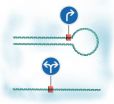"The lung is not a sterile organ," said David Cornfield, MD, an author of the new study, which will be published Sept. 26 in Science Translational Medicine. Although decades of received scientific wisdom said healthy lungs lacked resident microbes, scientists had begun questioning that notion. "This research confirmed a long-held suspicion that a forest of microbes exists in both healthy and diseased lungs," said Cornfield, a pulmonologist at Packard Children's and a professor of pediatrics in pulmonary medicine at the School of Medicine. "More surprising, our data presents a suggestion that the lung flora provides microbial homeostasis that might function to preserve health."
Healthy lungs' microbes have been overlooked in part because past research has focused heavily on lung diseases, Cornfield said. Another flaw in prior studies was a bias toward looking for micro-organisms that could be grown in labs. Many of the types of microbes that the Stanford researchers found in healthy lungs have never been cultured in a laboratory.
In contrast, a large body of research had previously shown chronic microbial colonization in the lungs of people with cystic fibrosis, a genetic disease characterized by serious, progressive lung problems and death from respiratory failure. For instance, CF patients are vulnerable to chronic infection with the bacteria Pseudomonas aeruginosa, which can cause pneumonia.
The new study used sputum samples from 16 CF patients and nine healthy control patients. The scientists also analyzed lung tissue samples from seven patients' explanted lungs, the organs removed when the patients received lung transplants. (Three lung-transplant recipients had CF; four had other lung diseases.) The researchers extracted DNA from the sputum and tissue, and selectively copied genes coding for the 16S ribosomal gene sequences, which are found only in bacteria. The resulting genetic material was measured to determine which phyla, or families, of bacteria it came from and the relative contributions of each bacterial phylum to the total bacterial population in the lungs.
Several differences emerged between CF patients and healthy people's communities of lung bacteria. In general, healthy individuals had more diversity among their lung bacteria. Different bacterial phyla predominated in the two groups: members of the Bacteroidetes and Fusobacteria phyla were much more prominent in healthy individuals, whereas CF patients had a larger percentage of Actinobacteria. Also, healthy people had a larger proportion of bacteria that had never been grown in a lab.
"I think the tendency toward decreased diversity can be metaphorically viewed as the same phenomenon that might happen in a rainforest," Cornfield said. "When the ecosystem of a rainforest is disturbed and one organism predominates, it undermines a carefully constructed balance and causes disturbances in overall ecosystem. I think it's reasonable to assume something similar could happen in the lung microbiome, where pathogenic bacteria may out-compete organisms that may play a salutary, health-affirming role."
The results open many questions for future research. No one has ever tested the idea that certain microbes benefit lung health, for instance. "We may need to consider strategies that allow favorable microbes to exist while eradicating disease-causing species," Cornfield said. "That paradigm, if it's true, would really turn the care of patients with pneumonia and other lower-airway diseases on its head." Future research might test whether CF or pneumonia patients could benefit from doses of probiotic bacteria to their lungs, he said.
In addition, no one is sure how the antibiotics often given to CF patients change the microbes in their lungs.
"The marked differences in composition and diversity of microbial communities from adults with cystic fibrosis and normal controls are intriguing," said Thomas Ferkol, MD, director of allergy, immunology and pulmonary medicine at the Washington University School of Medicine in St. Louis. "The question that remains to be answered is whether these differences are directly related to the underlying lung disease or simply a consequence of frequent antibiotic use, which has been shown to change microbiota of the upper airways." Ferkol was not involved in the research.
More questions arise from the fact that bacterial profiles varied within the group of CF patients. CF patients differ widely in their disease progression, even when they have the same disease-causing gene mutations. It is possible that patients' lung function may be linked to the bacteria present in their lungs. The research team now plans to study whether individual patients' bacterial profiles can be used to predict their clinical condition.
###Cornfield collaborated with first author Paul Blainey, PhD, previously a postdoctoral scholar at Stanford and now a faculty member at the Massachusetts Institute of Technology; Carlos Milla, MD, an associate professor of pediatrics in pulmonary medicine at Stanford and a pulmonologist at Packard Children's; and senior author Stephen Quake, PhD, professor of bioengineering and of applied physics at Stanford and an investigator at the Howard Hughes Medical Institute. The Department of Bioengineering is jointly operated by the School of Medicine and the School of Engineering.
The research was funded by Quake's HHMI funds and by grants from the National Institutes of Health, including an NIH Director's Pioneer Award.
More information on the Department of Pediatrics, which also supported the research, is available at http://pediatrics.stanford.edu.
The Stanford University School of Medicine consistently ranks among the nation's top medical schools, integrating research, medical education, patient care and community service. For more news about the school, please visit http://mednews.stanford.edu. The medical school is part of Stanford Medicine, which includes Stanford Hospital & Clinics and Lucile Packard Children's Hospital. For information about all three, please visit http://stanfordmedicine.org/about/news.html.
Lucile Packard Children's Hospital at Stanford is an internationally recognized 311-bed hospital, research center and leading regional medical network providing the full complement of services for the health of children and expectant mothers. In partnership with the Stanford University School of Medicine, our world-class doctors and nurses deliver innovative, family-centered care in every pediatric and obstetric specialty, tailored to every patient. Packard Children's is annually ranked as one of the nation's best pediatric hospitals by U.S. News & World Report and is the only Northern California children's hospital with specialty programs ranked in the U.S. News Top 10. Learn more about us at www.lpch.org and about our continuing growth at growing.lpch.org. Like us on Facebook, watch us on YouTube and follow us on Twitter.
PRINT MEDIA CONTACTS:
Ruthann Richter (650) 725-8047 (richter1@stanford.edu),
Erin Digitale at (650) 724-9175 (digitale@stanford.edu)
BROADCAST MEDIA CONTACT:
Robert Dicks at (650) 497-8364 (rdicks@lpch.org)



